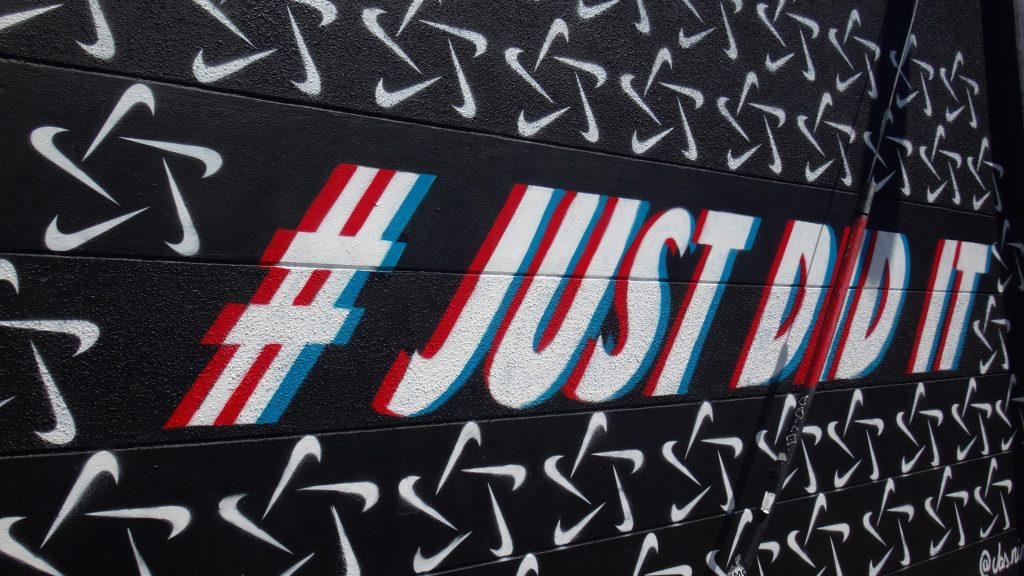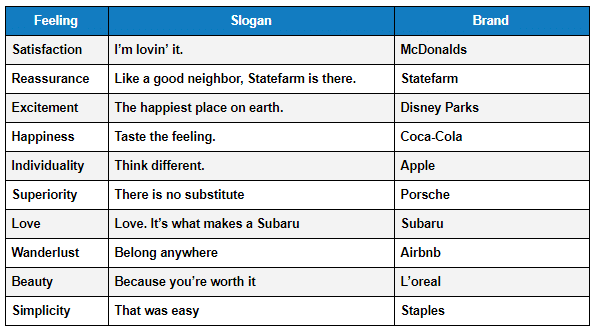
It’s easy to envy the popular companies that have those simple but memorable slogans everyone recognizes. Creating a catchy slogan for your brand is one of your biggest challenges as a marketer. The slogan has to be easy to remember and understand, all while accurately and fully conveying the purpose and drive of your business.
Slogans are everywhere. If you need some inspiration, here are some popular and effective ones you’ve probably heard of:
- “I’m Lovin’ It” – McDonald’s
- “15 minutes could save you 15% or more on car insurance” – GEICO
- “Taste the Rainbow” – Skittles
- “He/She Went to Jared” – Jared (Jewelry)
- “America Runs on Dunkin’” – Dunkin’ Donuts
This is a short list of many other famous slogans. Seems easy, right?
But when you sit down with your pen and paper, you struggle with writer’s block. You can’t think of a clever, memorable way to word your slogan.
Although it can be an extremely frustrating process, it doesn’t have to be. If you have a defined guideline to help you through it, you can create the catchiest slogan of your dreams in as little as one week. There are five simple steps to creating your dream slogan.
Step 1: Have a Slogan Team

It always helps to have a group of people with whom you share ideas. Although something may sound good in your head, you may discover otherwise after saying it out loud to an audience that can critique you objectively. While you, who worked hard on your slogan, feeling a bit attached to it, may be biased towards your creation, your team is not. It’s important to have a team who can critique, give suggestions, and steer you in the right direction.
Your team should include
- A small number of senior staff members familiar with the company culture
- A few C-suite executives familiar with business goals
- Gifted and skilled copywriters
- Marketing team members
However, you don’t want too many people on this team because there is such a thing as too many ideas, lengthening the process of finding one solid idea.
Step 2: Clearly Define What Makes Your Brand Different
What’s your brand’s purpose? What does it stand for? It’s important to communicate your brand’s essence and what it stands for on your slogan.
For the second step, each member of your slogan team participates. Each member writes what they believe your brand stands for on a whiteboard. At this point, nothing needs to be perfect because it is still the brainstorming stage.
After your team writes all of their ideas on the board, each member must vote on the idea that most accurately defines what your brand stands for. Write down the three definitions with the most votes.
Step 3: Determine the Emotion You Want to Evoke
A slogan really hits home if it evokes an emotion. Why? Because it’s more likely to stick with people after they’ve heard it.
With the three definitions from Step 2, each team member writes all the emotions they feel for each definition. After each member finishes, do another round of voting, but this time, vote on the emotions that most accurately fit the emotions customers must feel when they hear your slogan.
Capterra provides a useful example of slogans and the emotions they elicit.

Step 4: Workshop Slogan Ideas
This step is the hardest of them all. Take the outcomes from the two votes in the previous steps and work them into possible slogans. Your team should divide into smaller groups, each incorporating the ideas on what your brand stands for and the defined emotions you want to elicit into the slogans. No idea is wrong at this point. Both good and bad ideas should be presented.
Once each group has a list of possible slogans, each idea should be consolidated into one list. The list should then be passed around so each team member can vote for their favorite slogan. The top two slogans can move on to the last step.
Step 5: Test Your Slogan
A/B test your top two slogans, comparing the performance of each to see which delivers the best results. You can test them by sharing them with your entire company, with people on your email list, and participants of a paid survey. Next, present one slogan idea to one half of your target population and the other slogan to the second half. Whichever slogan performs best out of the two tests is the winner!
Depending on your testing method, the number of A/B tests you conduct and the length of each test will vary.
Copywriting Considerations

When writing a slogan, there are some copywriting factors you should keep in mind:
- It shouldn’t be too long or too short. It needs to be both easy to remember and fully expressive.
- It should be sustainable. If your slogan won’t be applicable one, five, or even 50 years from now, it’s not going to work.
- It should be consistent. Once you’ve settled on a catchy slogan for your brand, you should incorporate it into all marketing and advertising copy going forward.
The most challenging part of creating the perfect slogan is knowing where to start. Now that you know where to start (and finish), you no longer envy those other guys. It’s your turn to stand in the limelight!
